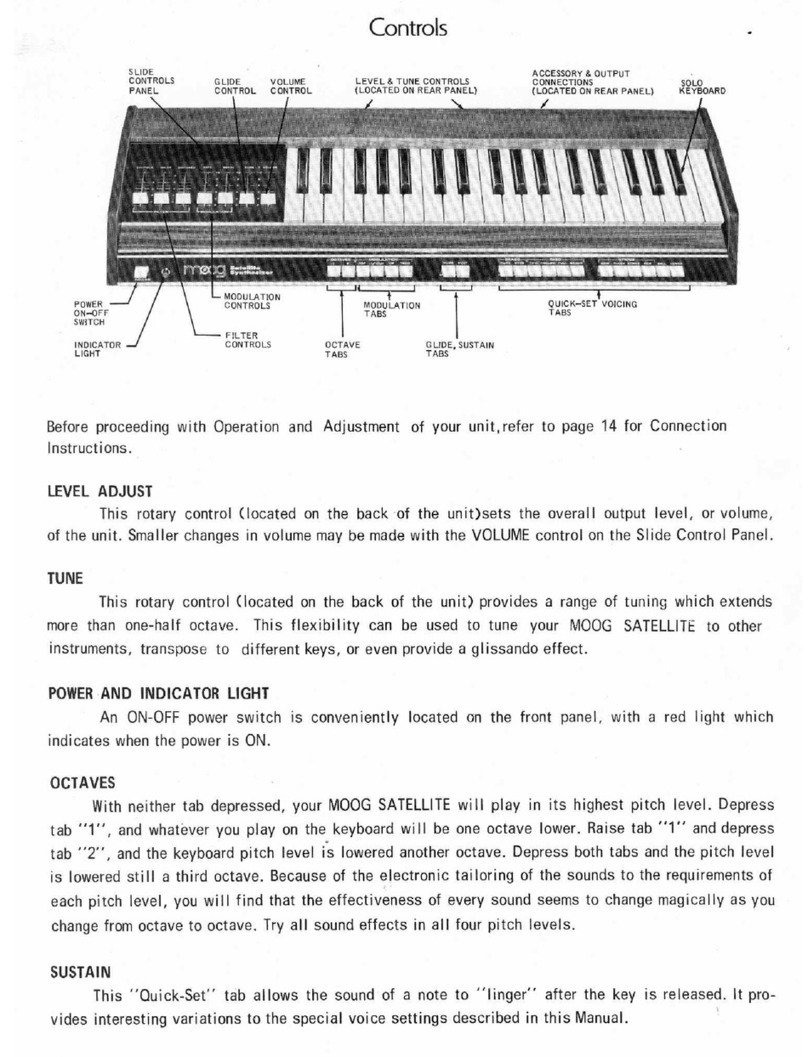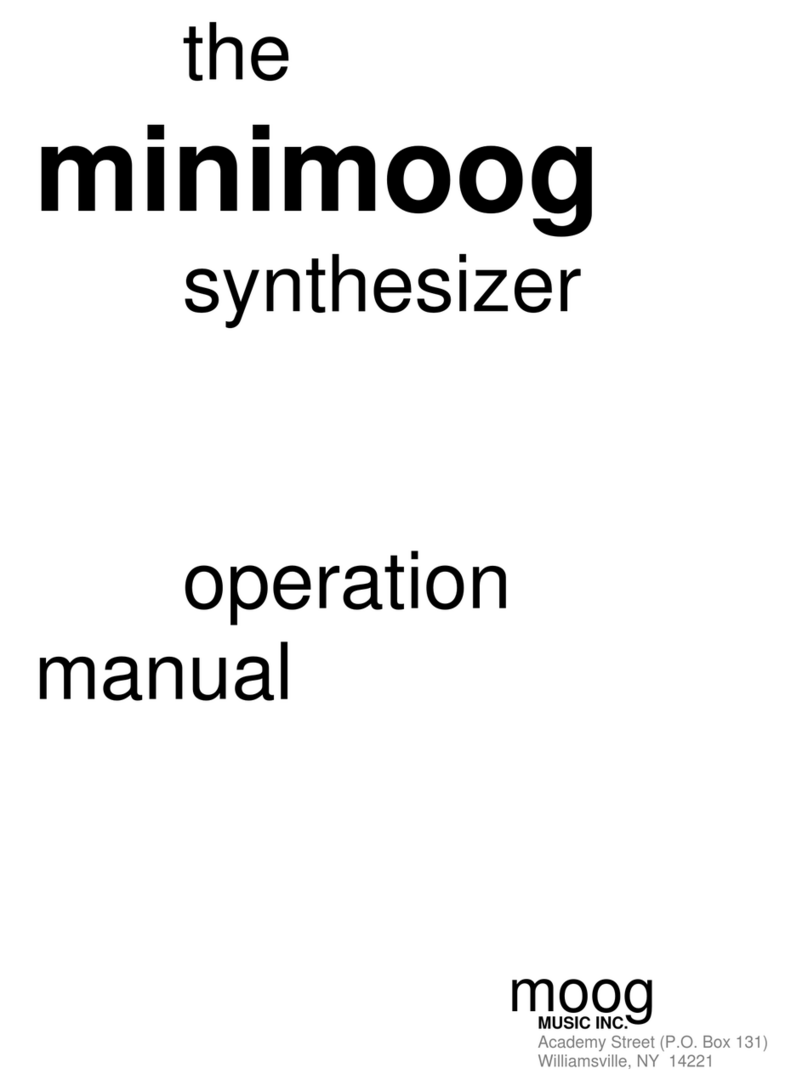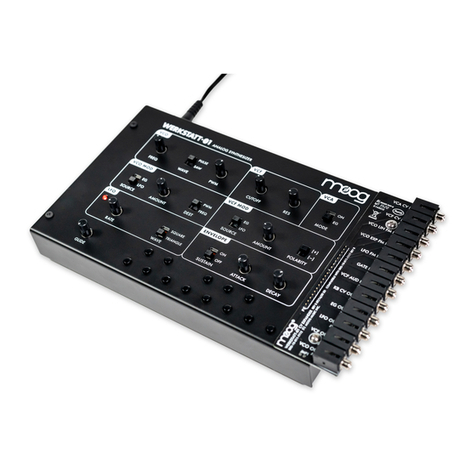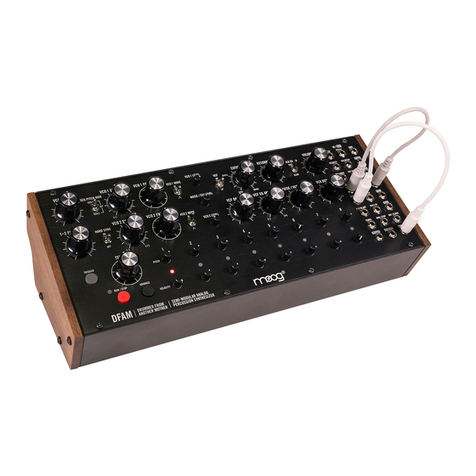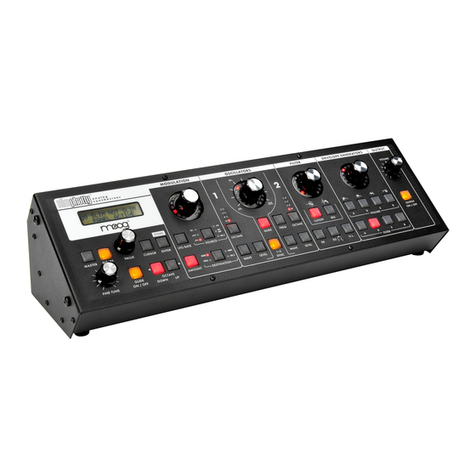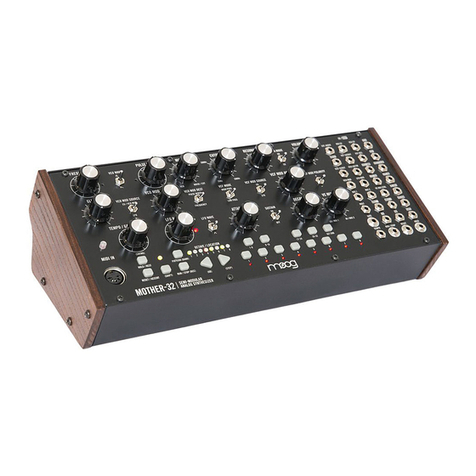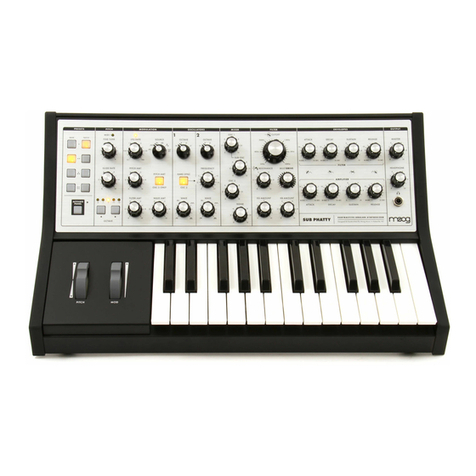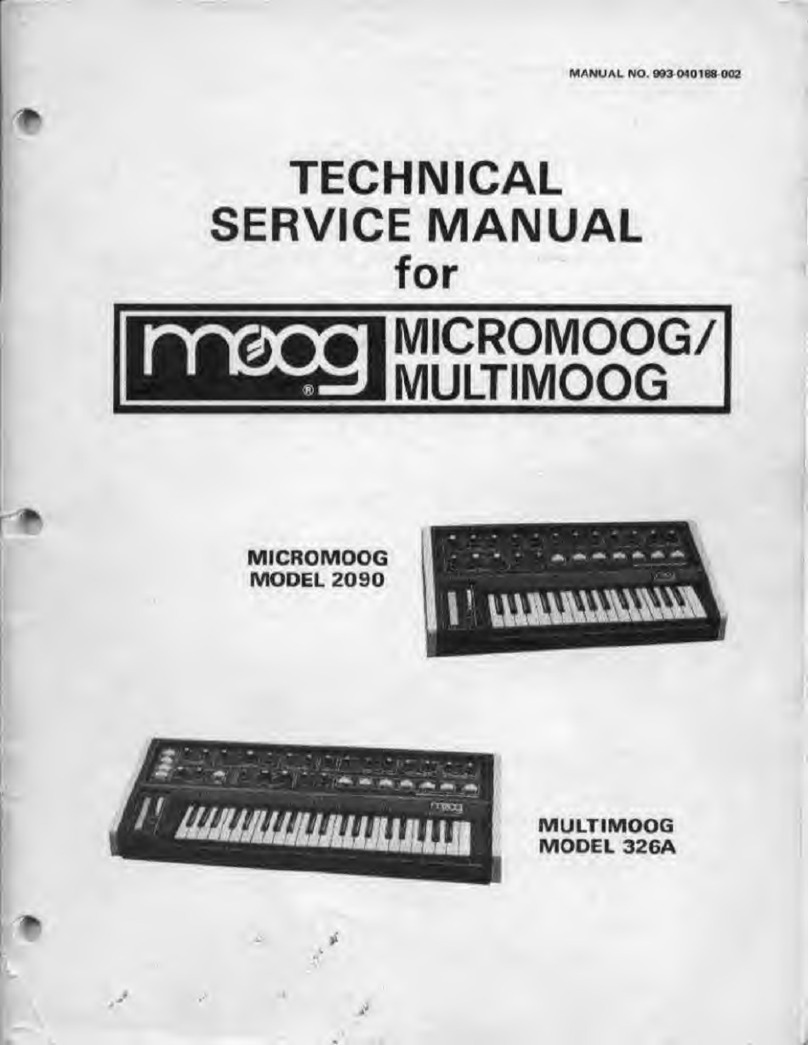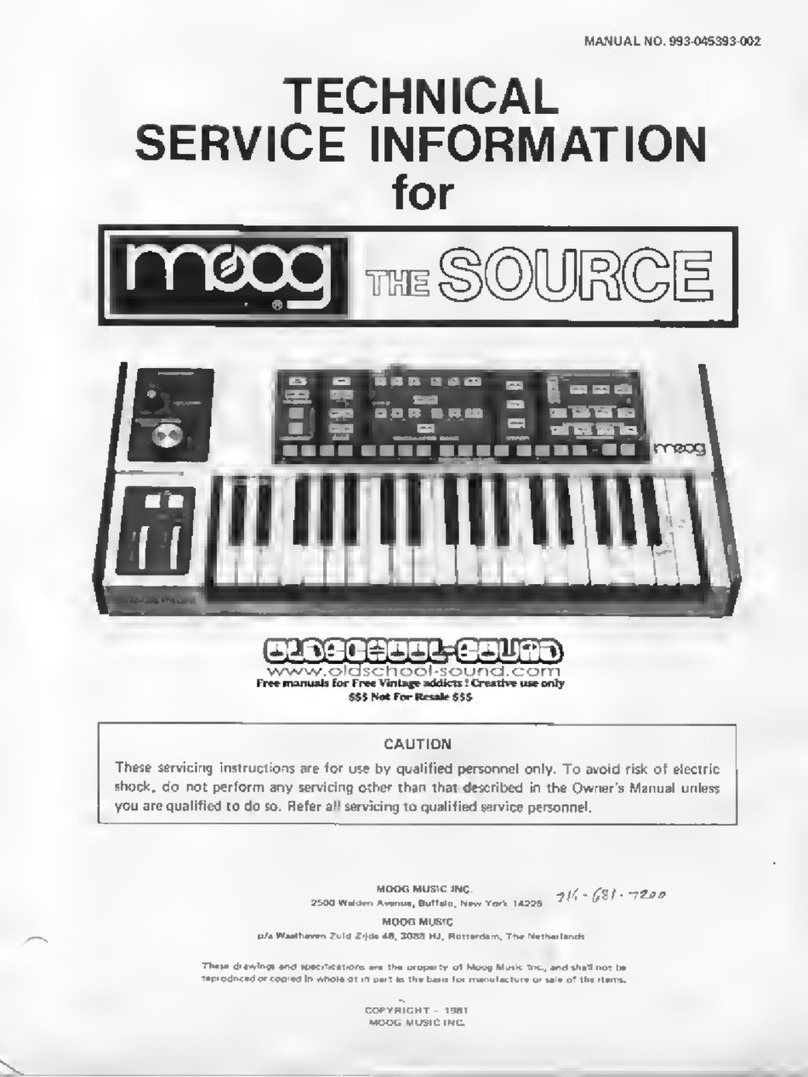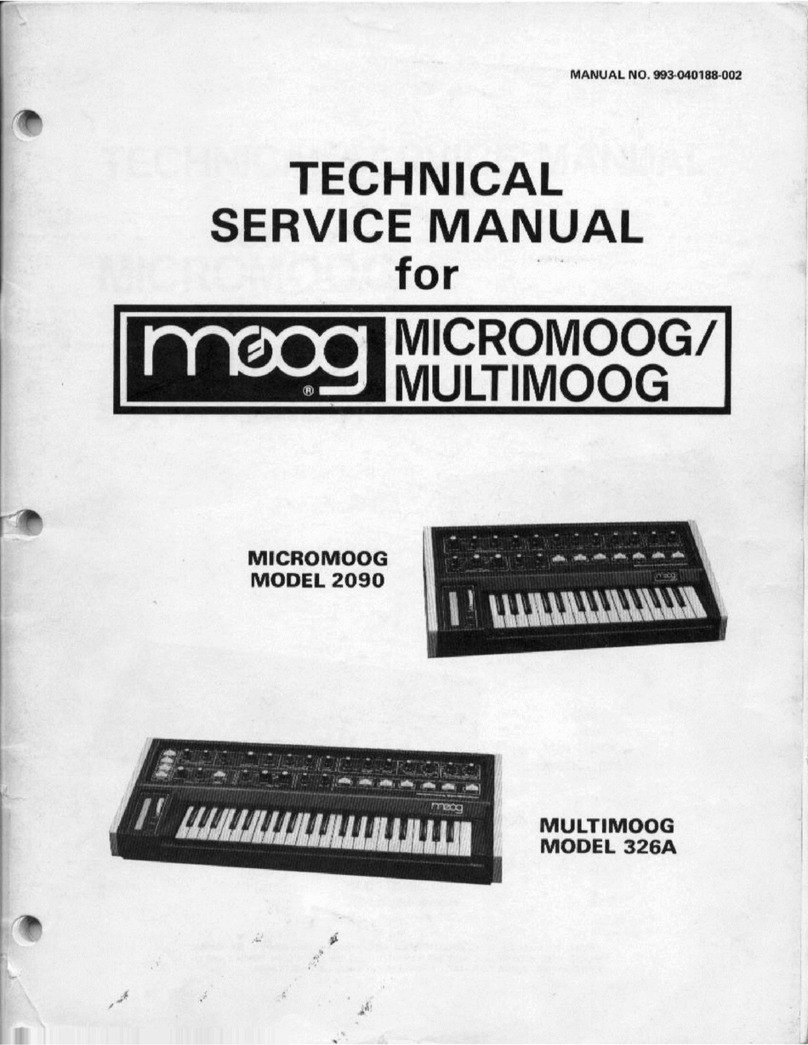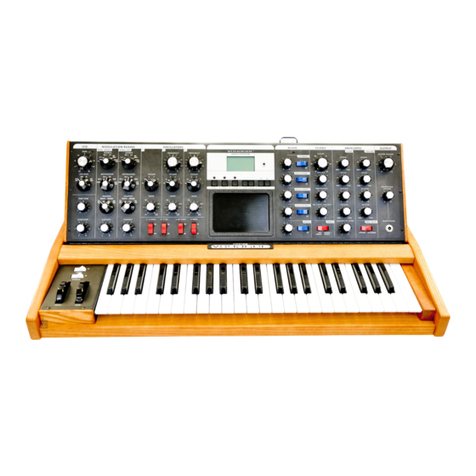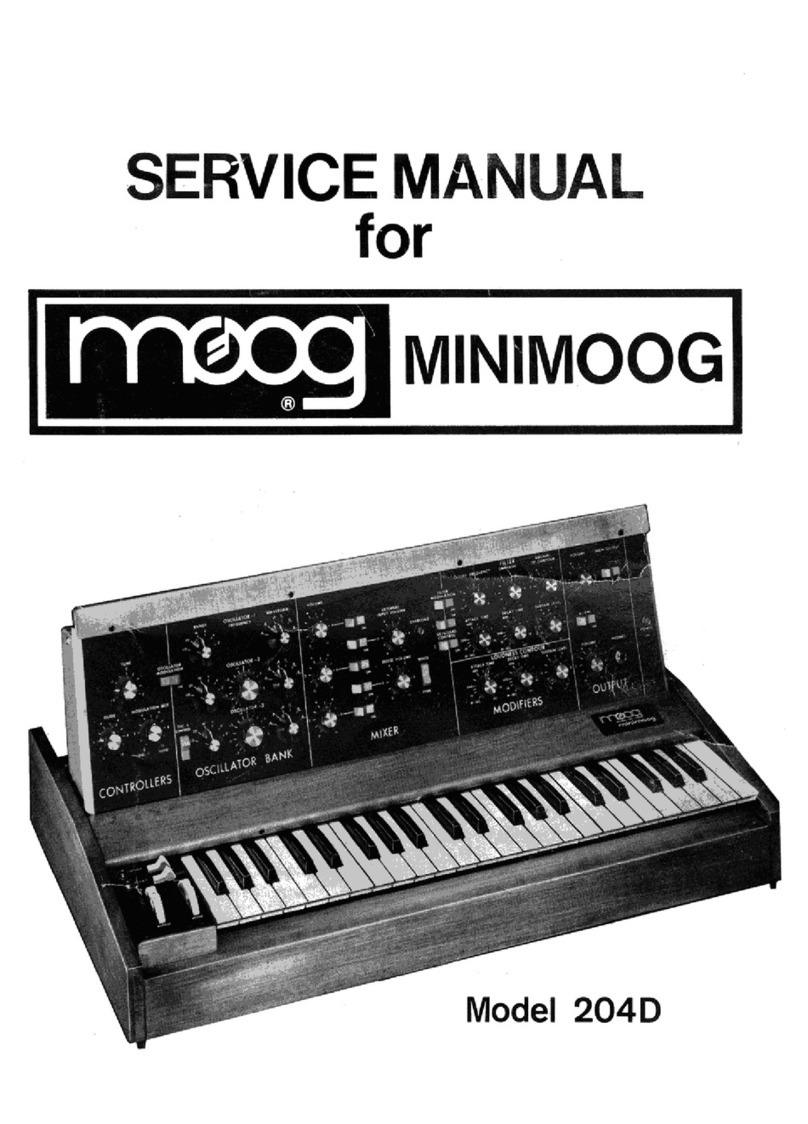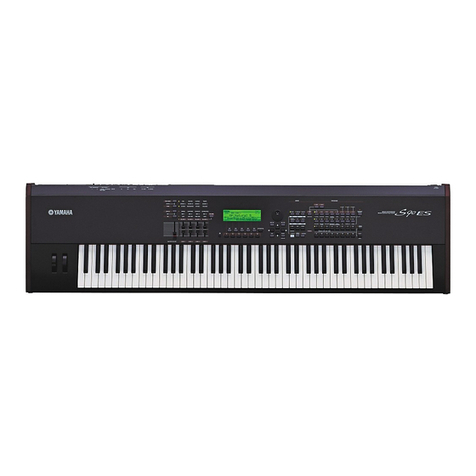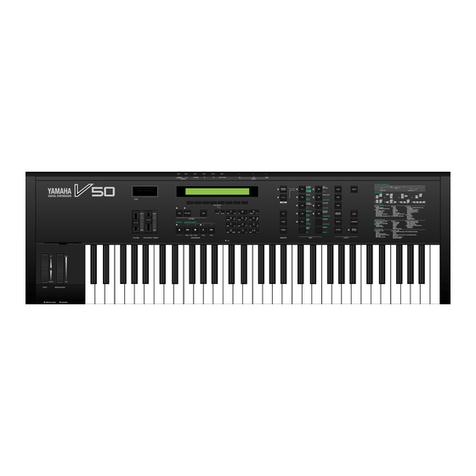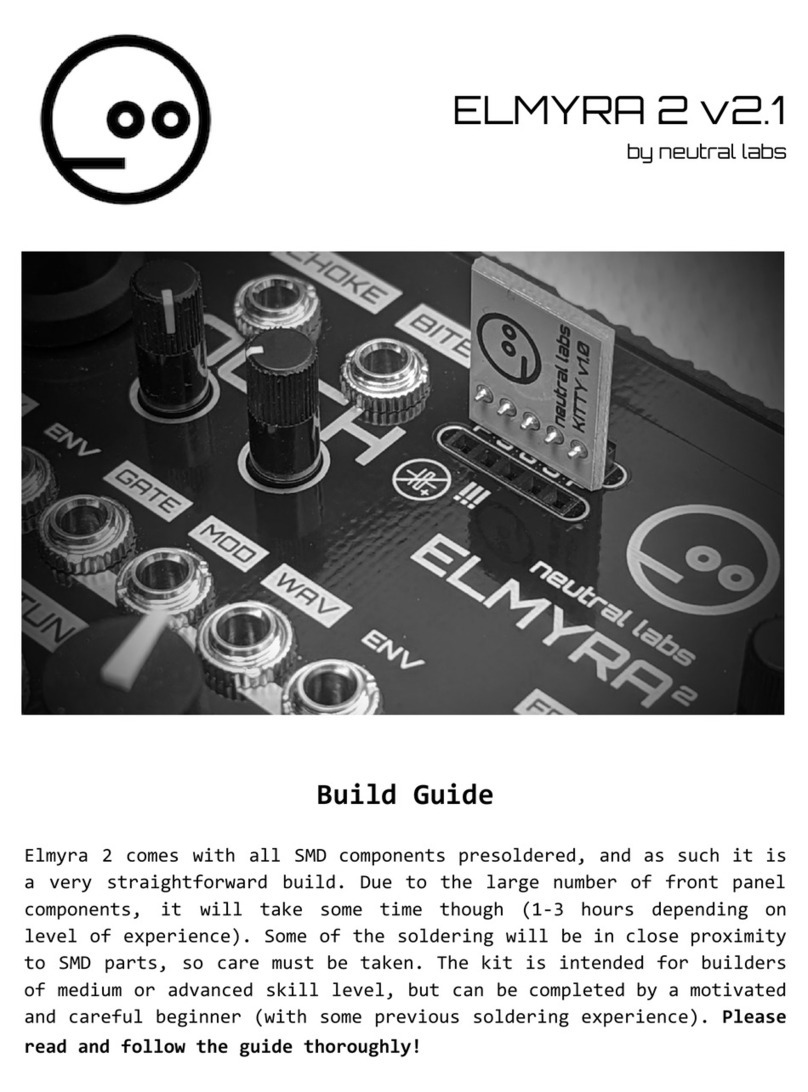
8 | Assembly Instructions
Assembly Instructions
To learn how to assemble your new synth, visit moogmusic.com/mavis for video assembly
instructions, follow the instructions on the included Quickstart and Assembly guide, or follow
the instructions on the next few pages.
Putting Mavis together is easy. All of the electronic components have been pre-assembled, so
no soldering is required. And while assembly is not complicated, it is important to follow each
step, in order. Be mindful that you are working with delicate, high-tech electronics, so a good
measure of caution and care is always in order.
A Note About Electrostatic Discharge: You may have noticed that little electric shock you sometimes receive
when you touch something like a metal doorknob. This is called electrostatic discharge, and it can be harmful
to electronic components. To protect the circuitry when you are assembling your Mavis, leave the circuit board
in its protective anti-static sleeve until you are ready to install it. Also, take a moment to ground yourself by
touching a metal surface or grounded object before you handle the circuit board.
Unpacking & Inspection
Check the contents of the shipping carton. Be careful when unpacking your new Moog
Mavis parts so that nothing is lost or damaged. Moog recommends saving the carton and
all packing materials in case you ever need to ship the instrument for any reason.
MAVIS SHIPS WITH THE FOLLOWING ITEMS:
1. Lid ......................................................................................................................................................................... x1
2. Chassis ................................................................................................................................................................ x1
3. Front Panel ........................................................................................................................................................ x1
4. PCB (Printed Circuit Board) ....................................................................................................................... x1
5. Hex Nut Driver Tool ....................................................................................................................................... x1
6. Rubber Feet ...................................................................................................................................................... x4
7. M3x8 Screws ..................................................................................................................................................... x9 (+1 spare)
8. Hex Nuts ............................................................................................................................................................. x24 (+1 spare)
9. Light Pipe ........................................................................................................................................................... x1 (+1 spare)
10. Serial Number Label ...................................................................................................................................... x1
11. Calibration Tool ............................................................................................................................................... x1
12. 6" 3.5 mm Mono (TS) Patch Cables ....................................................................................................... x5
13. Mavis Quickstart and Assembly Guide .................................................................................................. x1
14. 12 Volt DC Power Supply ............................................................................................................................. x1
WHAT YOU WILL NEED:
1. A table or surface where you can assemble your Mavis
2. A Phillips Screwdriver
3. A 1/4" instrument cable and amplified speaker, or headphones with a 1/4" plug
4. A properly wired AC outlet (100–240 Volts AC/50–60 Hz)
